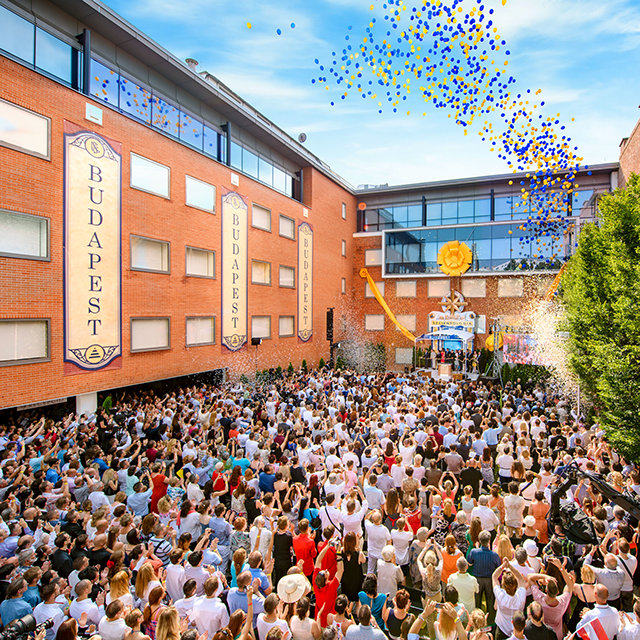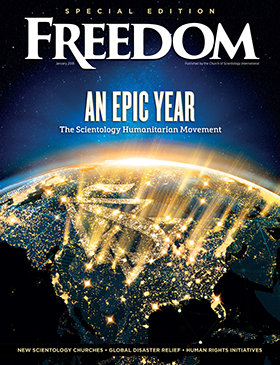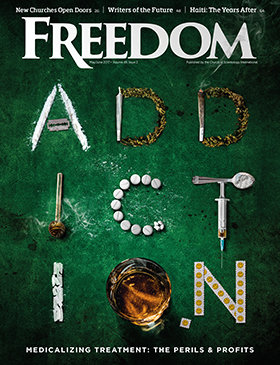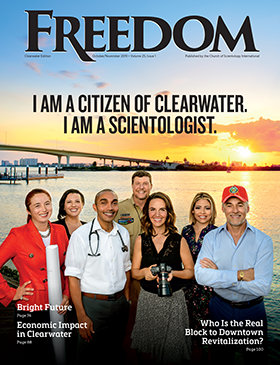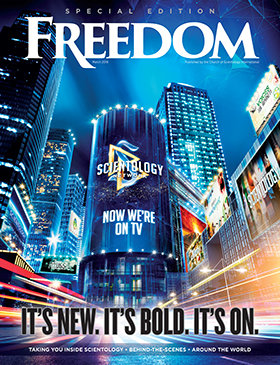“So much to do, so little time,” jazz great Louis Armstrong complained in a 1938 recording. And as so many others have realized, life is brimming with urgency and crisis, and the time allotted is never enough.
After the September 11, 2001, terrorist attack on America, David Miscavige, ecclesiastical leader of the Scientology religion, faced the same dilemma of work versus time—but the stakes were higher than at any other period in human history. Indeed, if something wasn’t done about the unraveling of society, humanity faced ultimate calamities.
“Humanity’s plunge into chaos hasn’t slowed,” said Mr. Miscavige. “We had to act.”
Scientology has the tools to reverse the decline. But how could the religion provide those tools to enough people in enough time? One answer was to open Churches of a sufficient scale to do the job. That presented another obstacle: how to build enough Churches that met the religion’s demanding criteria—and get them done quickly enough.
“People said we should do things gradually,” the Scientology leader said. “But that got us nowhere, and buildings took too long to plan, construct and open.”
More than 30 years earlier, Scientology Founder L. Ron Hubbard had defined the space, design and staffing for Churches of Scientology necessary to speed Scientologists to their full spiritual potential, while at the same time serving as emanation points of humanitarian and social betterment crusades.
Yet, if Scientologists in scores of cities each tried to design, fund and construct such grand Churches, the job would take years, decades, centuries. “At that rate, we were never going to get there,” Mr. Miscavige recalled thinking at that time.
How the Church “got there” was Mr. Miscavige’s intense planning. The key thinking was the scale of what had to be done. The Church brought in a master designer, the internationally renowned Gensler architectural firm. Every new Church had to be distinctive for its locale—but at the same time, vast economies of time and resources could be achieved by standardization. A water faucet is a water faucet, whether in Taiwan or Atlanta.
Another major advancement was to bring all coordination of Church building projects under a single authority, the International Design and Planning Office in Los Angeles. Letting that office organize the design and construction, Scientologists in each city were free to fundraise and develop community support.
“By unifying functions such as space planning, design and purchasing, we don’t duplicate work,” Mr. Miscavige said.
The program was launched in November 2003, with the first of the new Churches: Johannesburg, South Africa, was selected because of its distance from Scientology headquarters in the United States, and it has one of the oldest Scientologist communities in the world. The question needed to be answered: Were logistics so stretched by distance that there’d be problems? All it took was preparation and organization to solve those obstacles.
In a completely different scenario, San Francisco became the model of a Church in a world-class city. Finally, Buffalo, New York, made it clear that a Church could be established, funded, designed, constructed and opened in “anytown,” typical cities that are the lifeblood of every nation.
As the speed of Church openings increased, the religion could rightfully proclaim, “We can do it. We are doing it.” Expansion, growth, opening up new areas for more growth and expansion—that was the crusade Mr. Miscavige set for Scientology.
By the turn of 2016, 50 new Churches had opened their doors on six continents in cities from Berlin and Bogotá to Tokyo and Tel Aviv.
Expansion continued through the last 12 months, with new Churches opening their doors in storied cities from Atlanta, Georgia and Harlem, NYC, to Budapest, Hungary and Sydney, Australia, as featured in the pages that follow.
The new Scientology Churches around the world are the plan put into motion by Mr. Miscavige after the turn of this new millennium—now 55 new Churches championing the cause for humanity. It’s a plan that continues to accelerate, with yet 50 more already underway.





























